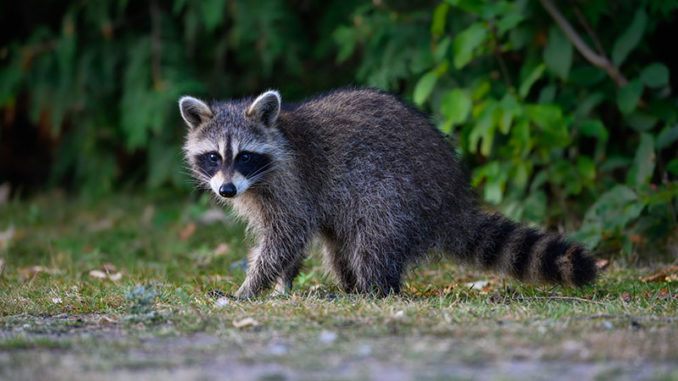
Raccoons (Procyon lotor) can live in almost any environment. Commonly encountered by hunters in the woods and anglers on the water, they are also seen in cities and suburban areas.
Known as mischievous creatures, they are easily identified by their medium-sized shape, their grayish-brown fur coat, black-ringed tail and mask-like black band around the eyes.
North America is home to only one species of raccoon — the boringly-named “common raccoon.”
Most abundant around water sources like bottomland forests, hardwood swamp or marshes, raccoons can be found anywhere. Cunning and playful, this highly-adaptable creature is known for several myths.
Myth: Raccoons clean their food in water. Fact: Raccoons often dabble their paws in water while scanning the area around them for food. They don’t take their food to water to clean it; they go to water to find food, using their dabbling method as cover.
Myth: If you see a raccoon in daylight, it has rabies. Fact: Raccoons often mill about during daylight hours, especially when food sources, whether natural or in garbage cans, are readily available. Many raccoons become accustomed to humans, and lose their fear of being in close proximity to them during daylight hours.
Myth: Raccoons make great pets. Fact: It is illegal in most states to keep raccoons as pets. They are a rabies vector species, meaning they can carry rabies (and spread it) without showing any symptoms of the disease themselves.
Hunting and trapping
Once treasured among fur hunters and trappers, raccoons are still one of the most important furbearing animals in the U.S. Hunting and trapping seasons still allow many folks to make a nice income off of raccoons.
Raccoons typically breed during late winter through late spring, and females give birth after 63 days. Most litters include two to five cubs, which grow quickly, establishing their own home ranges after 9 months.
Favorite foods include wild berries and fruits, acorns and other nuts, garden vegetables, numerous insects, frogs, fish, mice, bird eggs and even some small birds. They’ll gladly dumpster dive if they smell food.
Able to live up to 16 years in the wild, most die at around 2 1/2-years-old. Human-related activities, including hunting, trapping and automobile accidents, are their leading causes of death.
The post “Species Spotlight: Raccoon” first appeared on CarolinaSportsman.com.